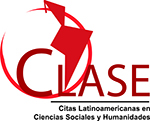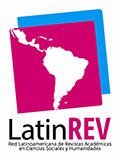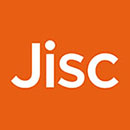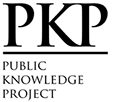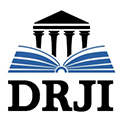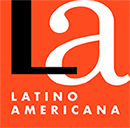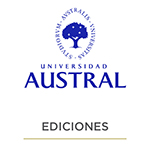The Identification and Use of Metadata in Audiovisual Works
Abstract
clear 1.082 / 5.000 Resultados de traducción star_border Audiovisual works are accessible to the public through various distribution mechanisms, traditionally called “windows”. Initially, the movie theater was the first place where the work was exhibited, to which television was later added. Both channels have established practices regarding the identification of the work, authorized uses and territories, audience or box office, as well as its authors, rights holders and participants, be they directors, screenwriters, producers, actors, musicians or dancers, among others. main. The information for the management of this type of works is highly relevant. In the digital field, multi-platform and multi-territorial exploitation requires new management strategies, which are based on data. This study analyzes how an information system should be consolidated in the digital field, making use of metadata, universal identifiers, watermarks and fingerprints, so that interoperable databases are consolidated for the benefit of all participants and of the public.Downloads
References
Aft, R. H. y Renault, C. E. (2011). Del guión a la pantalla. La importancia del derecho de autor en la distribución de películas. Industrias creativas – Publicación N° 6. World Intellectual Property Organization. https://www.wipo.int/edocs/pubdocs/es/wipo_pub_950.pdf.
Argentores. (s.f.). Régimen autoral y licencia para el uso del repertorio de Argentores en Video On Demand-Video a la Carta. https://argentores.org.ar/nuevas-tecnologias/aranceles-nuevastecnologias/.
Baca, M. (Ed). (2016). Introduction to Metadata (3a ed.). Paul Getty. https://www.getty.edu/publications/intrometadata/.
Broussard, G. (s.f.). The Media Industry’s “UPC Code” for Tracking Video Across Platforms. https://cimm.wpengine.com/wp-content/uploads/2013/04/TAXI-Complete-Whitepaper_July-2018.pdf.
Chan-Olmsted, S. M. (2019). A Review of Artificial Intelligence Adoptions in the Media Industry. International Journal on Media Management, 21(3-4). https://doi.org/10.1080/14241277.2019.1695619.
Chen, H., Darvish Rohani, B. y Koushanfar, F. (2019). DeepMarks: A Digital Fingerprinting Framework for Deep Neural Networks. Proceedings of the 2019 on International Conference on Multimedia Retrieval, 105-113. https://doi.org/10.1145/3323873.3325042.
CISAC. (18 de octubre de 2019). Cue Sheet Standards & Rules. Audio-Visual Experts Group & Cue Harmonization Working Group. Documento CISAVX17-1197. https://members.cisac.org/CisacPortal/consulterDocument.do?id=32286.
Clark, B. y Burstall, R. (2019). Crypto-Pie in the Sky? How Blockchain Technology is Impacting Intellectual Property Law. Stanford Journal of Blockchain Law & Policy, 2.2. https://stanford-jblp.pubpub.org/pub/blockchain-and-ip-law/release/1.
Colitre, B. (2019). Metadata for Rights Management: A Guide for Legal Practitioners. En La Polt, D., Winkler, J. y Arrington, L. (Ed.), Keeping It Honest: Transparency and Legal Issues in the Entertainment Industry (Cap. 4). Conferencia Anual de la International Association of Entertainment Lawyers (IAEL), Midem.
Covington, P., Adams, J. y Sargin, E. (2016). Deep Neural Networks for YouTube Recommendations. 10th ACM Conference on Recommender Systems, Boston, Estados Unidos, 15 al 19 de septiembre. http://dx.doi.org/10.1145/2959100.2959190.
Despringre, C., Taylor, J. y Amilhat, M. (2015). Audiovisual Authors Rights and Remuneration in Europe White Paper, Society of Audiovisual Authors (2a ed.). https://www.saa-authors.eu/file/43/download.
Doyle, G. (2010). From Television to Multi-Platform. Less from More or More for Less? Convergence: The International Journal of Research into New Media Technologies, 16(4). https://doi.org/10.1177/1354856510375145.
Entertainment Identifier Registry. (2016). Best Practices and Use Cases for EIDR Edits. https://eidr.org/documents/2016-05-12_Best_Practices_and_Use_Cases_for_EIDR_Edits_v24.pdf.
Entertainment Identifier Registry. (2018). Overview https://www.eidr.org/documents/2018-05-25_EIDR_Overview_FINAL.pdf.
Ficsor, M. (1991). El nuevo Tratado de la OMPI sobre el Registro Internacional de Obras Audiovisuales. I Congreso Iberoamericano de Propiedad Intelectual - Derecho de autor y derechos conexos en los umbrales del año 2000. Madrid, España, 28 al 31 de octubre de 1991.
Ficsor, M. (2003). Guía sobre los Tratados de Derecho de Autor y Derechos Conexos Administrados por la OMPI. Organización Mundial de la Propiedad Intelectual.
Friedmann, D. (2017). Oscillating from Safe Harbor to Liability: China’s IP Regulation and Omniscient Intermediaries. En Frosio, G. (Ed.), World Intermediary Liability Map, Mapping Intermediary Liability Trends Online. WILMap Project, Center for Internet and Society, Stanford University. https://www.researchgate.net/publication/316991001_Oscillating_from_Safe_Harbor_to_Liability_China%27s_IP_Regulation_and_Omniscient_Intermediaries.
García, R., Gil, R. y Delgado, J. (2007). A web ontologies framework for digital rights management. Artificial Intelligence and Law, 15(2), 137-154. https://doi.org/10.1007/s10506-007-9032-6.
Gervais, D. J. y Renaud, D. (2013). The Future of United States Copyright Formalities: Why We Should Prioritize Recordation, and How to Do It. Berkeley Technology Law Journal, 28. https://ssrn.com/abstract=2318496.
Gilchrist, D. y Luca, M. (31 de agosto de 2017). How Netflix’s Content Strategy Is Reshaping Movie Culture. Harvard Business Review. https://hbr.org/2017/08/how-netflixs-content-strategy-is-reshaping-movie-culture?ab=hero-subupperleft.
Gürkaynak, G., Yılmaz, I., Yeşilaltay, B. y Bengi, B. (2018). Intellectual property law and practice in the blockchain realm. Computer Law & Security Review, 34(4), 847-862. https://doi.org/10.1016/j.clsr.2018.05.027.
Herrero Subías, M., Medina Laverón, M. y Urgellés Molina, A. M. (2018). Recommendation Systems In the Spanish Audiovisual Market: Comparative Analysis Between Atresmedia, Movistar+ And Netflix. UCJC Business and Society Review, (fourth quarter). DOI: 10.3232/UBR.2018.V15.N4.02.
Hsieh, S. L., Chen, C. C. y Shen, W. S. (2014). Combining Digital Watermarking and Fingerprinting Techniques to Identify Copyrights for Color Images. Scientific World Journal, 2014. http://dx.doi.org/10.1155/2014/454867.
Independent Film & Television Alliance. (2015). Practical Guide to Copyright Protection. https://ifta-online.org/report-copyright/ .
Independent Film & Television Alliance. (2018). IFTA International Standards Terms. https://ifta-online.org/wp-content/uploads/2019/05/IFTA-International-Standard-Terms-V2018.pdf.
International Association of Sound and Audiovisual Archives, https://www.iasa-web.org/task-force/7-metadata
International Standard Audiovisual Number. (2005). Guía del Usuario ISAN. https://www.aribsan.com/documentos/Guia_usuario_ISAN-Version_2,2_27052005_.pdf.
International Standard Audiovisual Number. (2016). ISAN User Guide. https://www.isan.org/docs/isan_user_guide.pdf.
International Standard Audiovisual Number. (s.f.). Overview. https://www.isan.org/docs/ISAN_Overview.pdf.
Kim, D. (7 de mayo de 2019). How Netflix protects its content – Part 1. https://medium.com/pallycon/how-netflix-protects-contents-part-1-a40508ed0001.
Kindermann, J. (GEMA). (10 de junio de 2015). Harmonizing Film/TV Administration and Registration. Society Publisher Forum. http://members.cisac.org/CisacPortal/cisacDownloadFile.do?docId=27936.
Kovacs, E. F. (1991). International registration of audiovisual works: a new weapon against piracy. Entertainment Law Review, 2(4), 105-116.
Kumar, A., Smith, M. D. y Telang, R. (2014). Information Discovery and the Long Tail of Motion Picture Content. Management Information Systems Quarterly, 38(4), 1057-1078. http://dx.doi.org/10.2139/ssrn.1871090.
Mears, P. y De Kerautem, T. (s.f.). Open Watermarking of EIDR Identifiers. http://cimm-us.org/wp-content/uploads/2013/04/Open-Watermarking-of-EIDR-Identifiers_January-2018.pdf.
Milano, D. (s.f.). Content Control: Digital Watermarking and Fingerprinting, a White Paper. https://www.digimarc.com/docs/default-source/technology-resources/white-papers/rhozet_wp_fingerprinting_watermarking.pdf.
Mindtree. (s.f.). Rights and Metadata Management for Media. https://www.mindtree.com/about/resources/rights-and-metadata-management-media.
Mochon, J. P., Humbert, S., Menaldi, C., Wang, D., Blassel, P. y Facon, L. (2020). Towards more effectiveness of copyright law on online content sharing platforms: overview of content recognition tools and possible ways forward. Ministerio de Cultura de Francia. https://www.culture.gouv.fr/content/download/262679/2991173.
Moullier, B. y Holmes, R. (2007). ¡Derechos, cámara, acción! Los derechos de propiedad intelectual y el proceso cinematográfico. Industrias creativas – Publicación N° 2. World Intellectual Property Organization. https://www.wipo.int/edocs/pubdocs/es/copyright/869/wipo_pub_869.pdf.
MovieLabs. (2017). A short guide to identifiers for the digital supply chain. https://www.movielabs.com/md/papers/A%20Short%20Guide%20to%20Identifiers%20for%20the%20Digital%20Supply%20Chain%20(Final%2012-13-17).pdf.
MovieLabs. (17 de diciembre de 2019). Content Availability and Offer Status Data (Avails and Title List). https://www.movielabs.com/md/avails/v2.5/Avails_v2.5.pdf
MovieLabs. (2020). Specification for Enhanced Content Protection Version 1.3. https://movielabs.com/solutions-specifications/enhanced-content-protection-ecp/.
Negro Alousque, I. (2010). La traducción de títulos cinematográficos: ¿adaptación o creación? En Actas del XXVIII Congreso de Internacional de la Asociación Española de Lingüística Aplicada.
Northeast Document Conservation Center. (s.f.). Fundamentals of AV Preservation – Chapter 4. https://www.nedcc.org/fundamentals-of-av-preservation-textbook/chapter-4-introduction/chapter-4-section-5.
Paskin, N. (1999). Toward Unique Identifiers. Proceedings of the IEEE, 87(7), 1208-1227. doi: 10.1109/5.771073.
Paskin, N. (2015). The Digital Object Identifier: From Ad Hoc to National to International. En Carpenter, T. (Ed.), The Critical Component: Standards in the Information Exchange Environment. American Library Association http://www.alastore.ala.org/detail.aspx?ID=11483.
Polo Carrión, J. A., Caldera Serrano, J. y Poveda López, I. C. (2011). Metadatos y audiovisual: iniciativas, esquemas y estándares. Documentación de las Ciencias de la Información, 34, 45-64, http://dx.doi.org/10.5209/rev_DCIN.2011.v34.36445.
Rendina, M. (s.f.). Publication of metadata schema for Pan-European Aggregator. https://cordis.europa.eu/docs/projects/cnect/0/325100/080/deliverables/001-D21PublicationofmetadataschemaforPanEuropeanAggregator.pdf.
República del Ecuador. (2016). Código Orgánico de la Economía Social de los Conocimientos, Creatividad e Innovación. https://www.wipo.int/edocs/lexdocs/laws/es/ec/ec075es.pdf.
República del Ecuador. (2020). Acuerdo No. SENESCYT-2020-077, Reglamento de Gestión de los Conocimientos. Registro Oficial, Año II, Nº 1412. www.registroficial.gob.ec.
Rice, C. A., Beekhuizen, B., Dubrovsky, V., Stevenson, S. y Armstrong, B. C. (2019). A comparison of homonym meaning frequency estimates derived from movie and television subtitles, free association, and explicit ratings. Behavior Research Methods, 51,1399-1425. https://doi.org/10.3758/s13428-018-1107-7.
Rose, A. (julio de 2020). Blockchain: Transforming the registration of IP rights and strengthening the protection of unregistered IP rights. WIPO Magazine. https://www.wipo.int/wipo_magazine_digital/en/2020/article_0002.html.
Rostama, G. (2017). Scoping Study on the Impact of the Digital Environment on Copyright Legislation Adopted between 2006 and 2016. World Intellectual Property Organization.
Savelyev, A. (2017). Copyright in the Blockchain Era: Promises and Challenges. National Research University Higher School of Economics. https://wp.hse.ru/data/2017/11/21/1160790875/77LAW2017.pdf. )
Schaefer, M. (27 de noviembre de 2020). Why Metadata Matter for the Future of Copyright. Kluwer Copyright Blog. http://copyrightblog.kluweriplaw.com/2020/11/27/why-metadata-matter-for-the-future-of-copyright/.
Shackelford, S. J. y Myers, S. (2016). Block-by-Block: Leveraging the Power of Blockchain Technology to Build Trust and Promote Cyber Peace. Yale Journal of Law and Technology, Kelley School of Business Research Paper No. 16-85. http://dx.doi.org/10.2139/ssrn.2874090.
Sommaruga, N. (2017). El registro de contratos ante la Dirección Nacional del Derecho de Autor de la República Argentina. Revista Iberoamericana de la Propiedad Intelectual, (9), 89-120. https://ojs.austral.edu.ar/index.php/ripi/article/view/452.
Tresise, A., Goldenfein J. y Hunter, D. (2018). What Blockchain Can and Can't Do for Copyright. Australian Intellectual Property Journal, 28(4), 144-157. https://ssrn.com/abstract=3227381.
Uchtenhagen, U. (2005a). Copyright Collective Management in Music. World Intellectual Property Organization. https://www.wipo.int/publications/en/details.jsp?id=362.
Uchtenhagen, U. (2005b). El establecimiento de una sociedad de derecho de autor. Experiencias y observaciones. World Intellectual Property Organization.
Valor, J. (2018). The Media Landscape: from Showtime to Screen time. IESE Business School, Universidad de Navarra. https://dx.doi.org/10.15581/018.ST-486 .
Van Gompel, S. (2011). Formalities in Copyright Law, an Analysis of their History, Rationales and Possible Future. Kluwer Law International.
Van Gompel, D. y Bernt Hugenholtz, P. (2012). The Orphan Works Problem: the Copyright Conundrum of Digitizing Large-Scale Audiovisual Archives, and how to solve it. Popular Communication: The International Journal of Media and Culture, 8(1), 61-71. https://ssrn.com/abstract=1986876.
Vollmer, C. (2018). The Revenue Stream Revolution in Entertainment and Media. PwC, (91). https://www.strategy-business.com/media/file/sb91_The_-Revenue_Stream_Revolution_in_Entertainment_and_Media.pdf.
World Intellectual Property Organization. (1990). Records of the Diplomatic Conference for the Conclusion of a Treaty on the International Registration of Audiovisual Works. https://www.wipo.int/edocs/pubdocs/en/wipo_pub_343.pdf.
Xalabarder, R. (mayo de 2018). International Legal Study on Implementing an Unwaivable Right of Audiovisual Authors to Obtain Equitable Remuneration for the Exploitation of their Works. CISAC. https://www.cisac.org/Media/Studies-and-Reports/Publications/AV-Study/AV-Study.
Zetterlund, A. (2011). Common Works Registration User Manual. Documento CWR11-1494. CISAC. https://members.cisac.org/CisacPortal/consulterDocument.do?id=22272.
Copyright (c) 2021 Gustavo Schötz

This work is licensed under a Creative Commons Attribution-NonCommercial-NoDerivatives 4.0 International License.
This license allows the copy, distribution, exhibition and representation of the work provided authorship is acknowledged and the work is properly quoted. Commercial use of the original work or the generation of derived works are not allowed.
The authors hereby guarantee the right to the first publication of the work to the Revista Iberoamericana de la Propiedad Intelectual.









